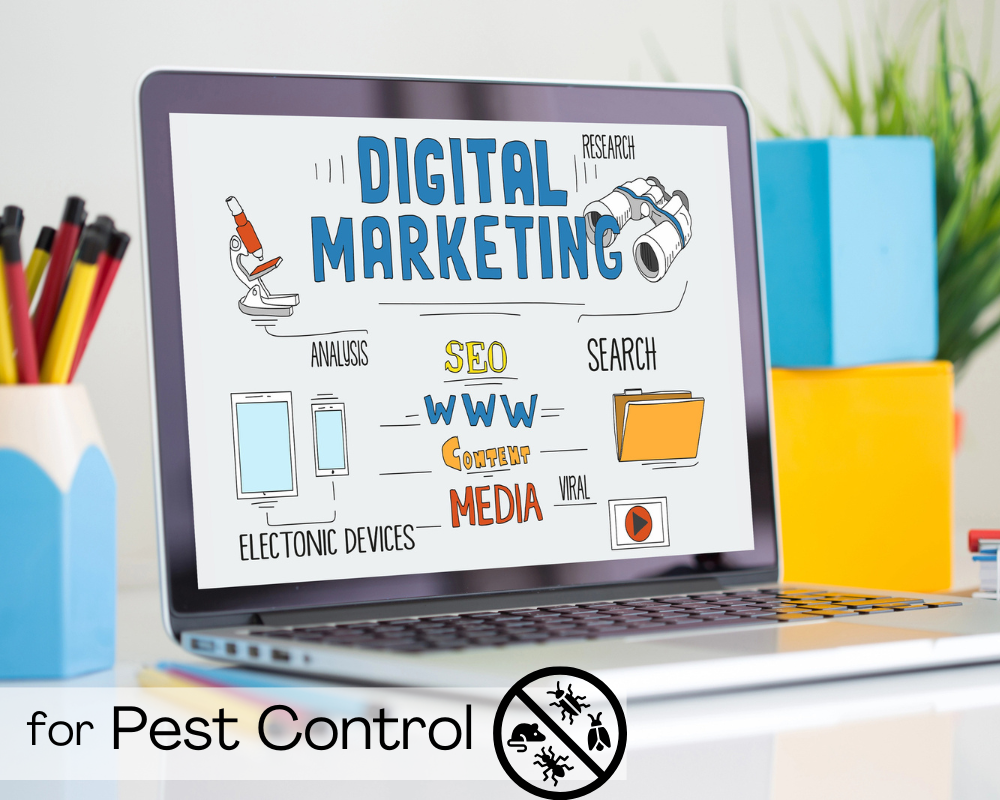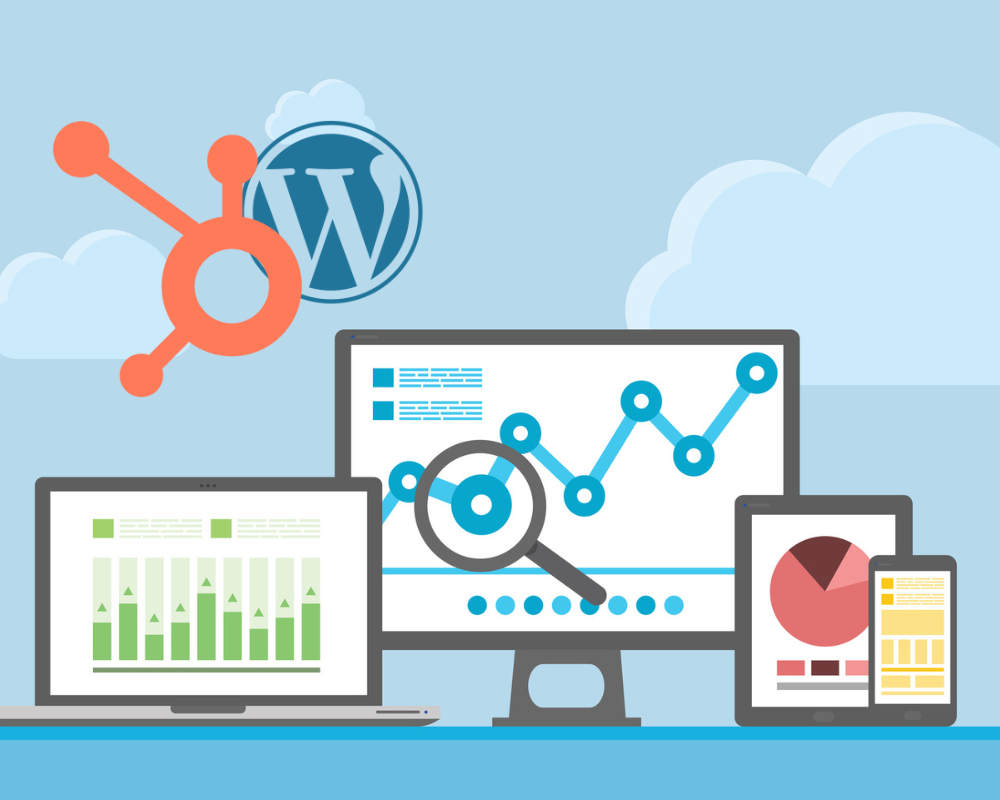How Sales Enablement Improves Customer Experience
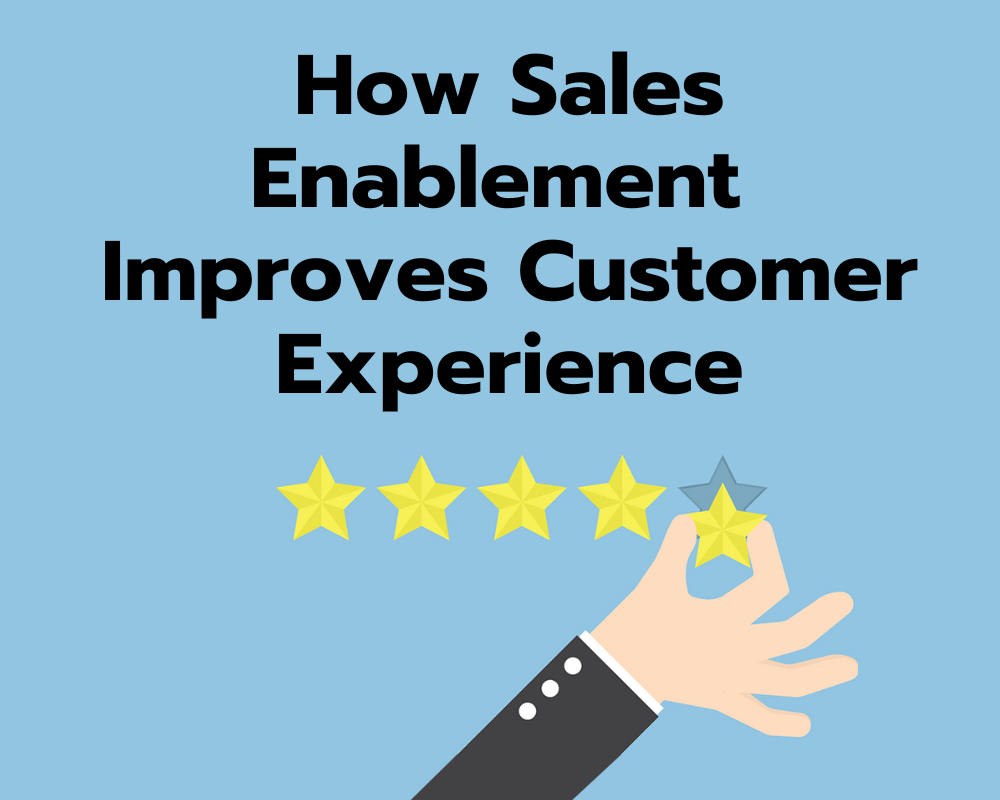
In today's technology-driven culture, creating a memorable customer experience is a top priority for the most disruptive companies. To do so, these industry leaders have found success by implementing a Revenue Operations Strategy and focusing on sales enablement. In this blog post, we'll provide valuable insights and knowledge on sales enablement and customer experience that will have you outperforming your competitors in no time.
Sales teams are the backbone of growth-driven organizations, but many struggle to generate positive revenue with their existing processes. However, companies that prioritize customer experience and leverage a customer relationship platform (CRM) at the core of their operations are reaping the rewards. How you sell is now more important than what you sell.
This blog post is tailor-made for sales directors, their teams, business owners, and even marketing teams looking to transform the traditional sales and marketing silos into a Revenue Operations Team. With our experience in deploying sales enablement strategies across various industries, we've helped shift the mindsets of salespeople and offered them improved processes with HubSpot, a powerful and data-driven CRM.
Sales enablement is crucial for organizations striving for growth. The sales landscape has undergone a massive transformation in recent years, rendering traditional sales processes ineffective. Salespeople face increasing challenges in meeting their quotas, and failing to do so can have dire consequences for revenue targets. It's crucial to adapt and embrace sales enablement as a fundamental part of the selling process.
Customers today are more informed and empowered than ever before. They actively seek information to understand their pain points and find solutions before even engaging with sales. They conduct thorough online research, seek recommendations on social media, and consult their trusted networks. As a result, sales teams struggle to make a lasting impact on potential customers, as they typically only connect with sales during the consideration stage of the buyer journey.
To overcome this challenge, businesses need to shift their approach from being mere messengers to engaging in meaningful one-on-one conversations with potential customers. By meeting customers on their preferred platforms and facilitating seamless communication, businesses can effectively address prospects' challenges and build stronger relationships.
What is Sales Enablement?
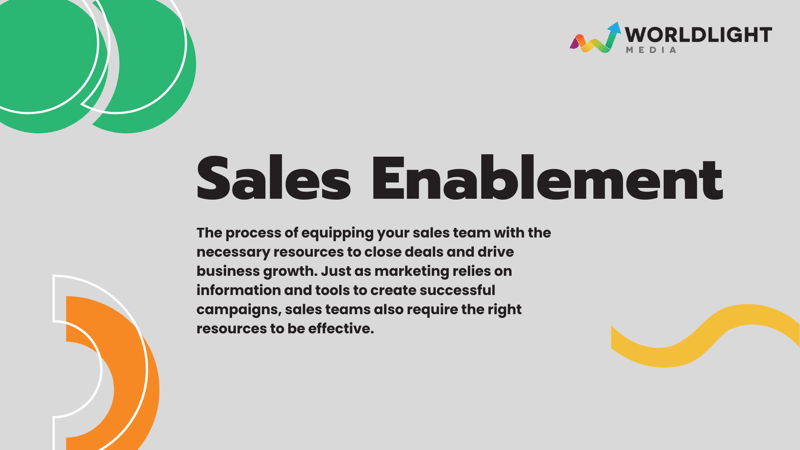
Sales Enablement is the process of equipping your sales team with the necessary resources to close deals and drive business growth. Just as marketing relies on information and tools to create successful campaigns, sales teams also require the right resources to be effective. Sales people need the knowledge, content, and technology to sell like rockstars.
When given the right resources, salespeople are able to offer value to their potential buyers, creating a meaningful experience for them.
However, sales cannot work in isolation. To maximize the impact of sales enablement, it is crucial for sales, marketing, and customer support to come together, taking collective ownership and functioning as a unified and aligned unit. Sales enablement is a collaborative effort that requires cooperation from both sides. According to HubSpot, misaligned sales and marketing departments costs businesses $1 Trillion per year.
But when sales and marketing collaborate effectively, salespeople can achieve remarkable results. They can guide leads through the buyer's journey with ease. And get this, research shows that when sales and marketing collaborate, organizations experience a whopping 20% growth. That's some serious revenue boost!
To thrive, organizations must prioritize sales enablement. The traditional sales process is no longer sufficient in today's well-informed and empowered customer environment. Sales teams must engage in personalized conversations and reach customers where they prefer to be. By implementing the right strategies, technology, and compelling content, sales enablement can have a remarkable impact on revenue growth and strong customer relationships.
Why Sales Enablement is Crucial for Your Organization
The world of selling has experienced a monumental shift in recent years, rendering traditional sales methods obsolete. Sales enablement is quickly becoming an essential component of the selling process for organizations focused on growth. Its role in reversing the current trend cannot be underestimated.
A recent study from the global sales training firm, Korn Ferry research shows that more than 60% of sales organizations currently have a dedicated person, program or function for sales enablement. This is an increasing trend that has just about doubled in the last 5 years.
Except that’s not the only reason sales enablement is critical for growth.
As mentioned earlier, buyers are more informed and empowered than ever before. Buyers seek information to understand their pain points and find solutions before engaging with sales. They use Google, social media, and trusted networks for research and recommendations, blocking intrusive sales techniques. Buyers' self-directed customer journey makes it challenging for sales to make a lasting impact.

The Customer Journey
So, how can this challenge be overcome? Instead of simply delivering messages to a wide audience, businesses should focus on having personalized, one-on-one conversations with potential customers.
To effectively engage with potential customers, it is important to meet them on their preferred platforms and be readily available for seamless and interactive discussions. This requires the right processes, technology, and content to address their individual needs and challenges.
By adopting this approach, businesses can build stronger relationships with potential customers and drive revenue growth. Each business may have a unique strategy, but at the core of it should be a CRM system like HubSpot that automates the sales process and enhances customer service.
Benefits of Sales Enablement
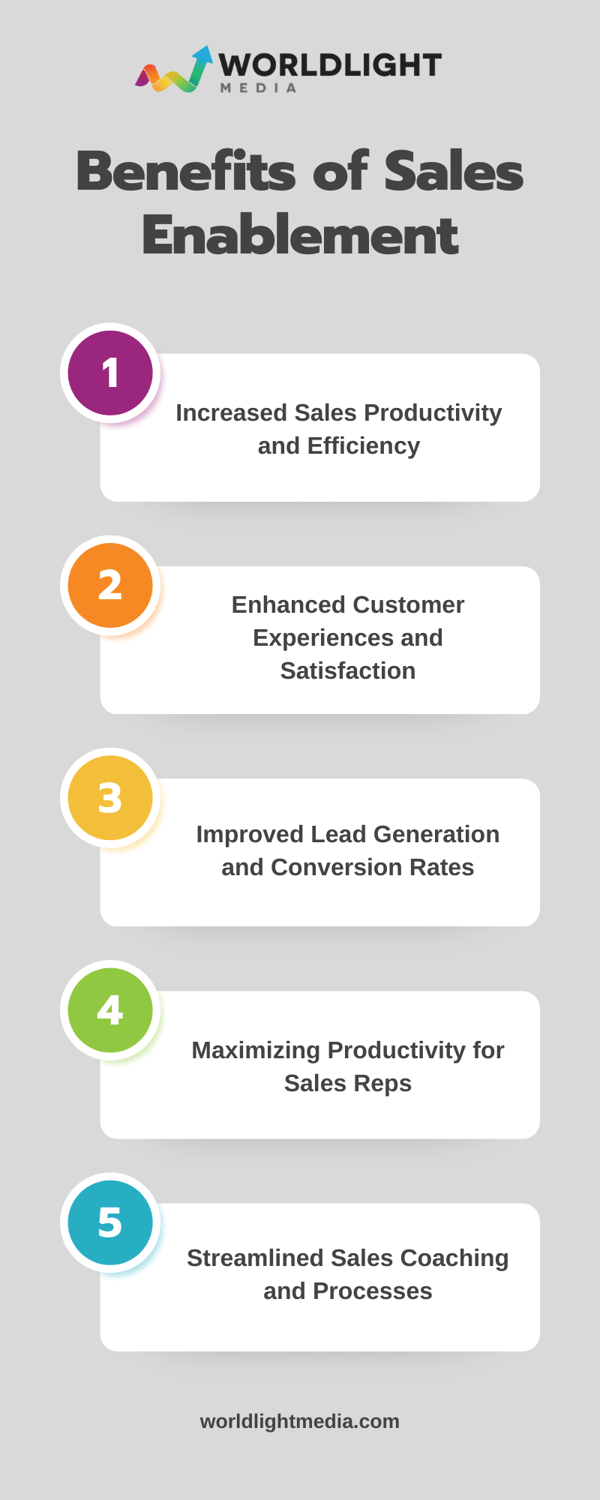
Sales enablement is a game-changer for sales teams, providing them with the tools and insights they need to confidently navigate the sales process and deliver exceptional value to buyers.
Businesses that embrace sales enablement reap a multitude of benefits from their investments, including:
Increased sales productivity and efficiency
The ultimate goal of implementing sales enablement is to drive increased revenue. While enablement may not directly impact revenue, its success can be measured by analyzing leading indicators such as conversion rates (value, volume, and velocity) that show performance trends. By focusing on these indicators, businesses can gain valuable insights into their sales processes and identify areas for improvement.
For example, if a conversion rate is low, it may indicate that the sales team needs better training or that the marketing team needs to generate higher-quality leads. On the other hand, if the conversion rate is high, it may indicate that the sales team is effectively engaging with prospects and closing deals. By closely monitoring these conversion rates and making necessary adjustments, businesses can drive revenue growth and achieve their sales enablement goals.
Enhanced customer experiences and satisfaction
Sales enablement allows businesses to provide exceptional customer service throughout the entire buyer's journey. From the initial contact to post-purchase support, sales teams can leverage their CRM to provide timely and relevant information, answer questions, and address any issues that may arise. This level of customer care goes a long way in building trust and loyalty, ultimately leading to increased customer satisfaction and repeat business.
In addition to personalized customer experiences, sales enablement also focuses on enhancing overall satisfaction. By streamlining sales processes and automating repetitive tasks, sales teams can dedicate more time and energy to providing value to their customers. This means that salespeople can focus on understanding their customers' unique challenges and offering tailored solutions, rather than getting bogged down by administrative tasks.
Improved lead generation and conversion rates
Ultimately, a sales enablement strategy that prioritizes enhanced customer experiences and satisfaction leads to improved lead generation and conversion rates. When customers feel valued and understood, they are more likely to engage with a business and make a purchase. By leveraging the power of a robust CRM like HubSpot, organizations can unlock the full potential of their sales teams and drive revenue growth by delivering exceptional customer experiences.
Maximizing sales productivity for sales representatives
With the support of a strong sales enablement practice, sales representatives gain valuable time to focus on their core selling activities. This not only leads to higher success rates but also allows for the development of deeper connections with customers.
The greatest advantage of sales enablement lies in its ability to empower customer-facing professionals to deliver value during every interaction throughout the customer journey. By transforming from mere vendors to trusted partners, sales organizations can achieve remarkable performance levels.
Streamlined sales coaching and processes
With the right CRM, sales team members can access training videos, call scripts, playbooks, and other helpful tools to enhance their selling capabilities. These resources eliminate the need to switch between different platforms, saving time and allowing salespeople to focus on their core responsibilities. Training videos provide knowledge and skills refreshment, while call scripts and playbooks offer structured guidance for sales conversations. Deal pipelines with automation streamline the sales process, and automated sales sequences save time by automating repetitive tasks. Overall, these tools enable salespeople to deliver exceptional customer service and drive revenue growth.
Creating Your Sales Enablement Strategy
While each business may have a slightly different approach, the core of it should be a CRM that automates the sales process and provides exceptional customer service. When guided by the robust CRM of HubSpot, a sales enablement strategy empowers salespeople to deliver value at every stage of the buyer's journey. This ultimately leads to the development of stronger relationships with potential customers, driving revenue growth.
Evaluate Your Current Situation
Assessing your current situation is crucial in laying the foundation for sales enablement. It provides a starting point from which you can develop a comprehensive plan to transform your organization. By conducting an in-depth evaluation of your current sales processes, you can identify areas of improvement and determine the necessary steps to align your sales strategies with the needs and preferences of your target audience.
Assessing your current situation involves analyzing your existing sales team's capabilities and resources. This includes evaluating their skills, knowledge, and experience, as well as the tools and technologies they have at their disposal. Understanding the strengths and limitations of your team will enable you to identify any skill gaps and provide the necessary training and support to enhance their performance.
Additionally, assessing your current situation requires examining your current sales processes and workflows. This includes evaluating the efficiency and effectiveness of your lead generation, qualification, and nurturing processes, as well as your sales forecasting and pipeline management. Identifying any bottlenecks or inefficiencies in your sales processes will allow you to streamline and optimize them for better results.
Align to your Customer's Journey
Sales enablement processes must be closely aligned with the customer journey to ensure a seamless and personalized experience for potential customers. By understanding the decisions that occur at each stage of the journey, businesses can tailor their process and content to address the specific needs of the buyer. This alignment is crucial for building trust and rapport with customers, as it demonstrates a deep understanding of their needs and desires.
At the initial stage of the customer journey, when prospects are just becoming aware of a business and its offerings, sales enablement can focus on providing educational and informative content. This can include blog posts, whitepapers, and videos that highlight the value and benefits of the products or services. By addressing the challenges and pain points that potential customers face, businesses can position themselves as problem solvers and trusted advisors.
As prospects move further along the customer journey and start considering different options, sales enablement can shift its focus to providing more personalized and targeted content. This can include case studies, testimonials, and product demonstrations that showcase how the offerings have helped similar customers in the past. By showcasing real-life examples and success stories, businesses can build credibility and confidence in their offerings, making it easier for prospects to make a purchasing decision.
Once a prospect has made the decision to purchase, sales enablement can provide support and guidance to ensure a smooth transition. This can include onboarding materials, training resources, and ongoing customer support. By offering comprehensive support throughout the onboarding process, businesses can minimize any potential hurdles or challenges that customers may face, leading to a positive and satisfactory experience.
Furthermore, sales enablement should continue to be integrated into the customer journey even after the purchase has been made. This can include follow-up emails, personalized offers, and upselling opportunities. By staying engaged with customers and providing ongoing value, businesses can foster long-term relationships and drive customer loyalty.
Audit your existing content & training resources
In order to effectively evaluate your existing content, it is important to consider its relevance to the different stages of the customer journey, buyer roles, and other priorities. This means assessing whether each piece of content aligns with the specific needs and preferences of your target audience at each stage of their buying process.
Start by reviewing your content inventory and categorizing it based on the different stages of the customer journey, such as awareness, consideration, and decision-making. This will help you identify any gaps or redundancies in your content strategy. For example, if you have a lot of content focused on product features and benefits but lack educational content that helps prospects understand their challenges, you may need to create more top-of-funnel content to address this gap.
Next, analyze your content from the perspective of different buyer personas. Consider whether your content effectively speaks to the concerns and priorities of decision-makers, influencers, and users within your target audience. This will ensure that you have content that resonates with each stakeholder throughout the buying process and helps them make informed decisions.
Lastly, consider the skill profile of your sales team and assess whether your training services align with the content you have developed. Training resources should be consistent with the content strategy and provide your sales team with the knowledge and skills they need to effectively engage with prospects and close deals. If there are any gaps in your training materials, identify areas where additional resources or support may be needed to enhance the capabilities of your sales force.
Choose your Technology Stack
Sales enablement is intrinsically connected to the power of technology. By leveraging a robust CRM like HubSpot, your revenue department can automate sales tasks, saving you valuable time and effort. Below are some of the sales automation tools HubSpot features that can improve your sales process.
Sales Automation Tools
Here are some ways you can utilize HubSpot to automate various sales tasks, allowing your team to focus on what matters most.
Email templates
Repurpose engaging email content into convenient templates that can be accessed on demand within a salesperson's inbox. This saves time and ensures consistency in your communications.
Email sequences
Set up a series of automated sales emails and follow-up tasks for each prospect. This way, you can concentrate on closing warm leads while the sequences handle prospecting for you.
Email tracking
Stay informed the moment a lead engages with an email. Thanks to email tracking, you'll receive relevant notifications at the top of your activity feed, allowing you to follow up at the perfect time.
Workflows
Unlike email sequences, workflows automate sales processes by setting triggers to create deals, follow-up tasks, quotes, and more at predefined intervals. This streamlines your sales processes and ensures nothing falls through the cracks.
Sales Document Sharing
Load up your CRM with a wide range of informative resources such as white papers, data sheets, case studies, and brochures. These valuable tools will assist your team in guiding buyers through their decision-making process. With just a few simple clicks, you can effortlessly send these documents to interested prospects. Plus, your sales team will receive instant notifications when a prospect views these materials, allowing them to follow up promptly and effectively.
Automated Meeting scheduler
Streamline the process of scheduling meetings by allowing prospects to choose a convenient time to talk, all without any effort from your sales team. Meeting and appointment times will seamlessly sync to your calendar through a calendar link or website module.
Chatbots
Engage in personalized conversations with potential customers on a large scale. Hubspot's chatbot can be custom designed to seamlessly handle your organization's common queries, converting website visitors into valuable leads. A conversational chatbot can answer the most common questions so your sales team can redirect their efforts towards the most important conversations, ensuring that every interaction is meaningful and impactful.
Live chat
Utilize HubSpot's live chat feature to engage with prospects in real-time as they actively interact with your website. This powerful tool allows you to seamlessly convert new leads, close more deals, distribute valuable content, and provide exceptional customer support. With live chat, you can create meaningful connections with potential customers, leading to increased sales and customer satisfaction.
Gain Valuable Insights with Reports & Analytics
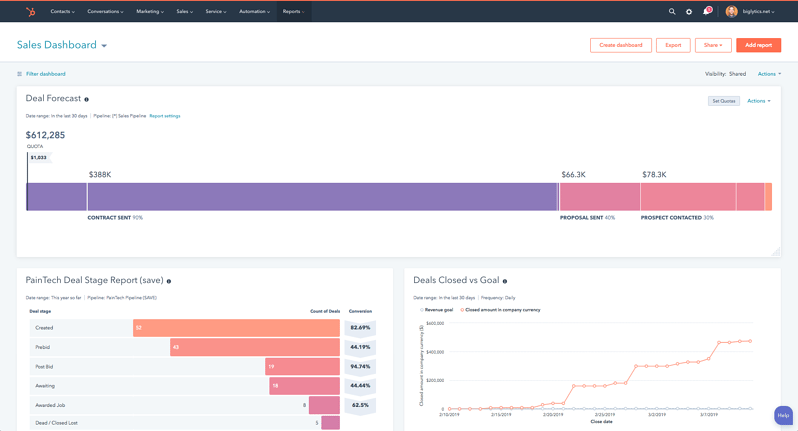
The best performing companies rely on data to drive decisions. According to a recent LinkedIn report, top-performing salespeople who exceed their quotas by 125% or more are more likely to utilize data than their peers.
To make the most of your data, it's crucial to leverage reporting and analytics tools that effectively organize, consolidate, and present information in a meaningful and easily understandable manner. Fortunately, there's no need to choose between a platform designed for operations or sales – you can have both. By utilizing a comprehensive CRM platform like HubSpot, you can gain complete visibility into your sales and business performance.
To get started, define a set of standardized sales reports that are specifically relevant to your organization. By doing so, you'll quickly uncover valuable insights and gain confidence in understanding what strategies are working and what areas need improvement.
Here are the key reports that are crucial for a successful sales enablement strategy:
1. Contacts report: This report provides a comprehensive overview of your potential customers, helping you identify new opportunities and pinpoint weaknesses in your sales funnel.
2. Lifecycle stage funnel report: By categorizing your leads based on their lifecycle stage, this report reveals where conversion inefficiencies may exist, allowing you to optimize your sales process.
3. Revenue report: Understanding your revenue sources is essential for making informed decisions. This report helps you identify the most rewarding channels, enabling you to invest wisely.
4. Companies report: This report is particularly valuable for tracking multiple leads from a single company. When combined with lead scoring, it becomes a powerful tool for account-based sales.
5. Win/losses report: As the name suggests, this report highlights which deals are being won or lost and provides insights into the performance of associated salespersons. This information is invaluable for refining your sales strategies and improving overall success rates.
HubSpot's robust reporting and analytics tools are essential for organizations focused on growth. With a 360-degree view of the customer journey, your data is centralized, providing valuable insights for sales and marketing teams. This level of visibility allows for exceptional customer experiences, fostering loyalty and driving growth. By prioritizing the customer in every decision and interaction, your organization establishes a strong position for success.
If you would like help navigating the process of implementing a Sales Enablement Strategy in your organization, WorldLight Media, a HubSpot Partner, can help! Contact us to start a conversation.






